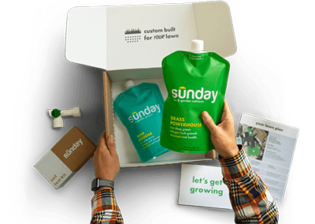Struggling to find the perfect grass seed for your Alaskan lawn? You’re not alone. With unique challenges like harsh winters and limited sunlight, choosing the right grass seed is crucial for a healthy, beautiful lawn.
In this article, we’ll explore top grasses for Alaska, including Kentucky Bluegrass, Fine Fescue, and more. Let’s find the ideal seed for your Alaskan lawn!
Kentucky Bluegrass
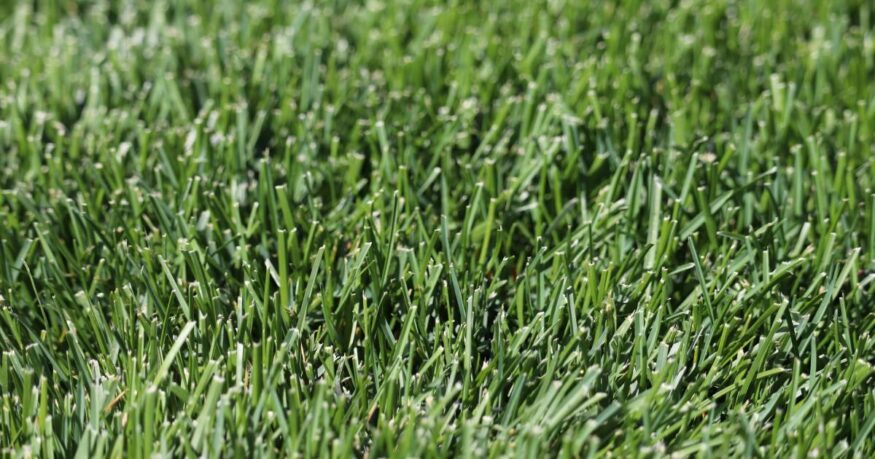
| Also Known As | Poa pratensis L. |
| Type of Grass | Cool season perennial |
| Optimal Zones | Northern cool season zone, transition zones |
| Root Structure | Shallow |
| Winter Hardiness | Excellent |
| Shade Tolerance | Poor to Good |
| Water Requirements | High |
| Drought Tolerance | Poor |
| Self Repair Capacity | Excellent |
| Overall Maintenance Requirements | High |
Why Kentucky Bluegrass is The Most Popular Choice
Kentucky Bluegrass is a top choice for Alaskan lawns. Adaptable and versatile, this grass is suitable for residential, commercial, and sports fields. Its medium green color blends seamlessly with other grasses, and its dense growth habit withstands foot traffic.
As a cold-tolerant grass, Kentucky Bluegrass survives Alaska’s harsh winters. It also resists common diseases and pests, making it low-maintenance. However, it may take longer to establish and may not thrive in shady areas or poorly drained soils.
To maintain a healthy Kentucky Bluegrass lawn:
- Water deeply once or twice a week during the growing season
- Fertilize with a balanced formula every four to six weeks
- Mow regularly, maintaining a height of two to three inches
While Kentucky Bluegrass requires more maintenance than other grasses, its cold tolerance and resilience make it a reliable choice for Alaskan lawns.
Looking for the best grass seed for your region?
Our smart lawn plans are designed to work perfectly with your local soil and climate conditions, without any of the toxic stuff.
Use the code EHG20 for an instant $20 discount!
- Personalized lawn care: Custom lawn plans based on soil analysis, climate data, and your specific lawn needs.
- Convenience with a conscience: Products that are not only easy to use but also safe for you, your pets, and the planet.
- Science-backed formulas: Bio-based formulas contain effective, natural ingredients like seaweed, molasses, and iron.
- Expert support: Get one-on-one guidance from a real person and rest easy with Sunday's satisfaction guarantee.
Fine Fescue
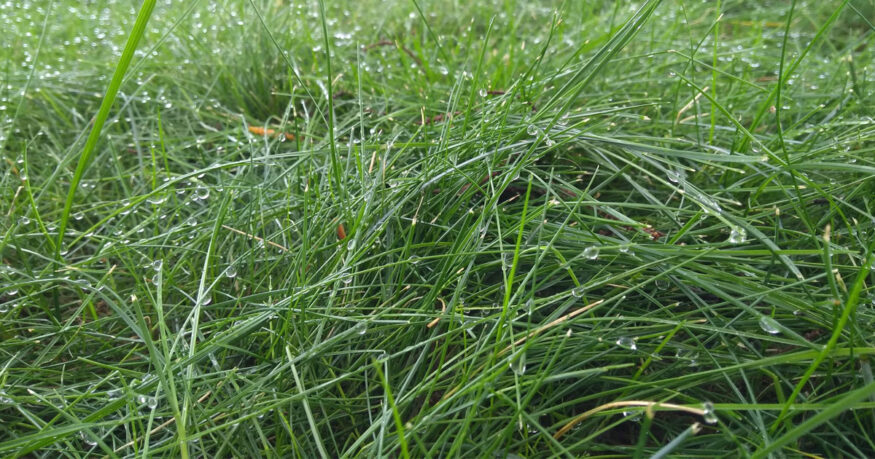
| Also Known As | Hard fescue, strong creeping red fescue, slender creeping red fescue, sheep fescue, chewings fescue; Festuca L. |
| Type of Grass | Cool season perennial |
| Optimal Zones | Northern zones |
| Root Structure | Medium |
| Winter Hardiness | Excellent |
| Shade Tolerance | Excellent |
| Water Requirements | Medium to High |
| Drought Tolerance | Excellent |
| Self Repair Capacity | Limited |
| Overall Maintenance Requirements | Low |
What Makes Fine Fescue A Great Grass For Alaskan Lawns
Fine Fescue is another excellent option for Alaska. This cool-season grass tolerates cold temperatures, drought, shade, and poor soil conditions. Its fine texture and dark green color create a diverse, resilient lawn.
For a successful Fine Fescue lawn:
- Sow seeds in early spring or late summer at a rate of 4 to 5 pounds per 1000 square feet
- Water lightly and frequently until germination, then reduce frequency and increase depth
- Mow at a height of 2 to 3 inches, leaving clippings to provide nutrients
- Fertilize once or twice a year with a balanced formula, preferably in spring and fall
- Aerate every two to three years to improve drainage and reduce compaction
While Fine Fescue has some drawbacks, such as slower establishment, poor performance in high traffic areas, and susceptibility to snow mold, proper care can yield a healthy, beautiful Alaskan lawn.
Perennial Ryegrass
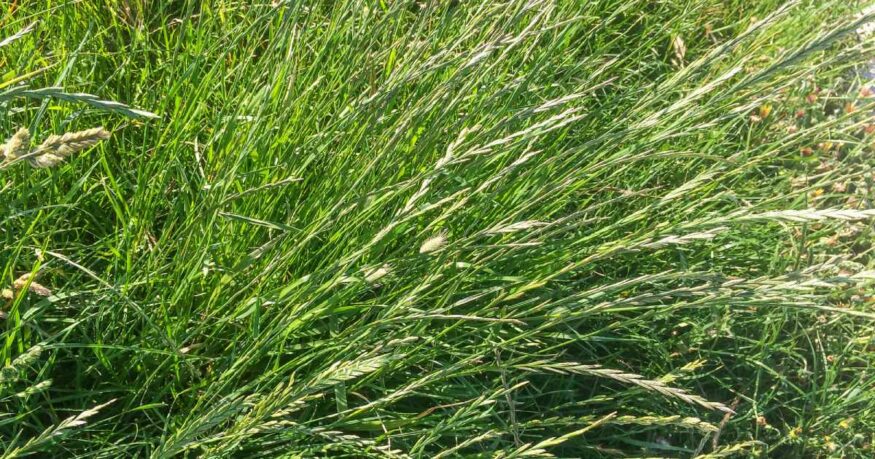
| Also Known As | Lolium perenne L. |
| Type of Grass | Cool season perennial |
| Optimal Zones | Mild northern zones |
| Root Structure | Deep |
| Winter Hardiness | Good to excellent |
| Shade Tolerance | Moderate |
| Water Requirements | High |
| Drought Tolerance | Good |
| Self Repair Capacity | Excellent wear tolerance |
| Overall Maintenance Requirements | Moderate to high |
Why Perrenial Ryegrass Grows well in Alaska
Searching for a grass seed that can withstand Alaska’s harsh winters and less-than-ideal soil conditions? Then Perennial Ryegrass is worth considering. This popular grass seed not only boasts an attractive appearance and easy maintenance, but it also tolerates drought, cold temperatures, and poor soil conditions.
Quick to grow, Perennial Ryegrass can reach heights of up to six feet or more when fully mature. Its medium to dark green hue is visually appealing and blends well with other grasses. Plus, it resists many common diseases and insects, making it a fantastic choice for Alaskan lawns.
To care for your Perennial Ryegrass lawn, follow these simple steps:
- Sow seeds in early spring or late summer when the soil temperature is between 50°F and 65°F.
- Use a rate of 5 to 9 pounds of seed per 1000 square feet of lawn area.
- Rake soil lightly to cover seeds with about 1/4 inch of soil.
- Water daily until germination, then reduce to once or twice a week depending on weather conditions.
- Fertilize with a balanced fertilizer once or twice a year, preferably in spring and fall.
- Aerate soil every two or three years to improve drainage and reduce compaction.
Keep in mind that Perennial Ryegrass is best suited for areas with a short growing season, as it may not survive harsh winters. Additionally, it may struggle under heavy snow or ice accumulation, which can damage grass blades and roots.
In dry or hot conditions, it may need more frequent watering than other grasses, as it can wilt quickly under stress. Finally, Perennial Ryegrass may not compete well with weeds or invasive plants, reducing its quality and appearance. Despite these challenges, Perennial Ryegrass remains an excellent choice for a healthy and beautiful Alaskan lawn.
Learn More: Check out our state-by-state grass choice guides.
Alaska Climate And Growing Challenges For Lawns
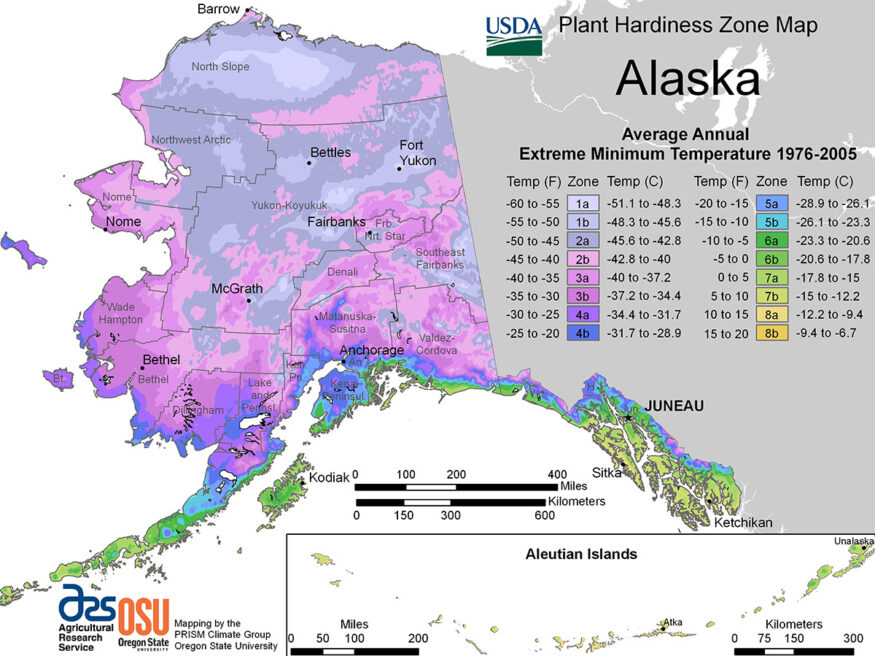
Alaska’s climate presents unique challenges for growing and maintaining a beautiful lawn. Factors such as long daylight hours, frequent frosts, snow and ice, and a short growing season can make it difficult to establish and maintain healthy grasses. Moreover, Alaska’s acidic and poorly drained soils, low soil temperatures, low soil fertility, and high weed pressure can further limit lawn growth and health.
Weather and Climate
Alaska’s cold and wet climate varies by region and elevation. With a short growing season ranging from 60 to 120 days, it’s crucial to select the right grass type for your specific location. Extended daylight hours in summer and limited daylight in winter can affect grass growth and dormancy.
Soil and Other Considerations
Acidic and poorly drained soils in Alaska can hinder grass growth and health. Low soil temperatures may delay germination and establishment, while low soil fertility necessitates regular fertilization and liming to maintain grass health. High weed pressure can compete with grasses for space, nutrients, and water, making weed control measures essential.
Looking for the best grass seed for your region?
Our smart lawn plans are designed to work perfectly with your local soil and climate conditions, without any of the toxic stuff.
Use the code EHG20 for an instant $20 discount!
- Personalized lawn care: Custom lawn plans based on soil analysis, climate data, and your specific lawn needs.
- Convenience with a conscience: Products that are not only easy to use but also safe for you, your pets, and the planet.
- Science-backed formulas: Bio-based formulas contain effective, natural ingredients like seaweed, molasses, and iron.
- Expert support: Get one-on-one guidance from a real person and rest easy with Sunday's satisfaction guarantee.
Frequently Asked Questions
When Should I Plant Grass Seed In Alaska?
You should plant grass seed in Alaska at least two to four weeks before the first expected frost of the season. The best time to plant grass seed in Alaska is during the fall, winter and early spring months when the soil is not frozen. This is because grass seed won’t germinate if it’s buried under a layer of ice or snow.
When Should I Aerate My Lawn In Alaska?
You should aerate your lawn in Alaska once a year in the spring or fall when the soil is moist but not wet. Aeration helps improve the drainage, oxygen and nutrient availability of the soil and reduces soil compaction. Aeration also helps prevent thatch buildup and improves the root growth of the grass.
